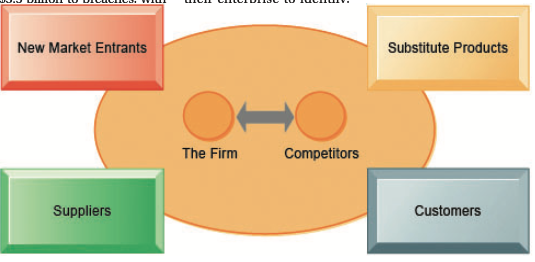Companies are aware that creating a solid information management system such as having the right policies, training staffs and having business structures that manage end-to-end data flow makes them transparent and builds better customer loyalty. Companies have various ways of assessing problems and opportunities that may exist in an ever-changing data-driven economy.
Yet, some institutions fail to see the value these information management systems add to their overall business. Most companies are still in the early stages of connecting their value chain to their information management systems.
A McKinsey report revealed that in 2020 alone, US businesses reported 53,000 system break-ins—a 150 per cent in- crease over 2000 and another two-thirds of breaches go unreported. Africa lost an estimated $3.5 billion to breaches, with Nigeria recording losses of $649m.
Studies show that there will be an upward trend in data breaches and the loss of revenue by companies. Cyber- security Ventures, a respected resource for cybersecurity statistics and predictions, predicts global cybercrime costs will reach $10.5 trillion by 2025, representing a 15% annual increase for each of the next four years.
The increase in these breaches will become more pronounced as companies begin to run their operations digitally. Strengthening information management systems becomes sacrosanct.
Creating a comprehensive view of data flows through de- tailed data mapping is a critical step to identifying where information exists, who has access to this information, the type of security that guards the data at rest, and the type of policies that direct the protection of information assets.
Working with each stake- holder on a departmental basis creates a broader picture of how information flows within a particular company. Risk management teams may have turned to other areas within their enterprise to identify, analyse and mitigate certain information risks. These days companies need to under- stand that their information footprint feeds into their financial stability and business continuity.
Companies must understand that measures taken before an incident are more critical than actions taken after an event. Nigerian hospitals, insurance companies, government institutions, to use that as an example, are in a rush to have more physical assets digitised but yet fail to create an information management system or invest in cybersecurity tools and teams.
One way to strengthen in- formation management systems is to design a framework with data and cybersecurity components, cutting down on the use of excessive information and arming staffs within a company with the proper training to understand their role in the scheme of things. Big institutions that are more advanced would perhaps invest in modular tools with components that give insights into information flows within and outside the business.

Physical assets, too, must be protected. There are tendencies of flooding during rainy sea- sons. Companies can invest in building suitable drainage systems and waterproof sealing for machines within their data centres. They might also con- sider the need to have cooling systems to maintain the right temperature for the infrastructure devices.
Companies that hold many information assets have a vested interest in preserving and creating robust management systems. What’s more important is for companies to announce their milestones in protecting the information in their possession. In these contemporary times, it is hard not to be transparent about the company’s information management methodologies.
Investing in building the right system will pay off over time, not only by preventing financial losses but also by boosting the entire business processes and boost an end-to-end information management transparency.

